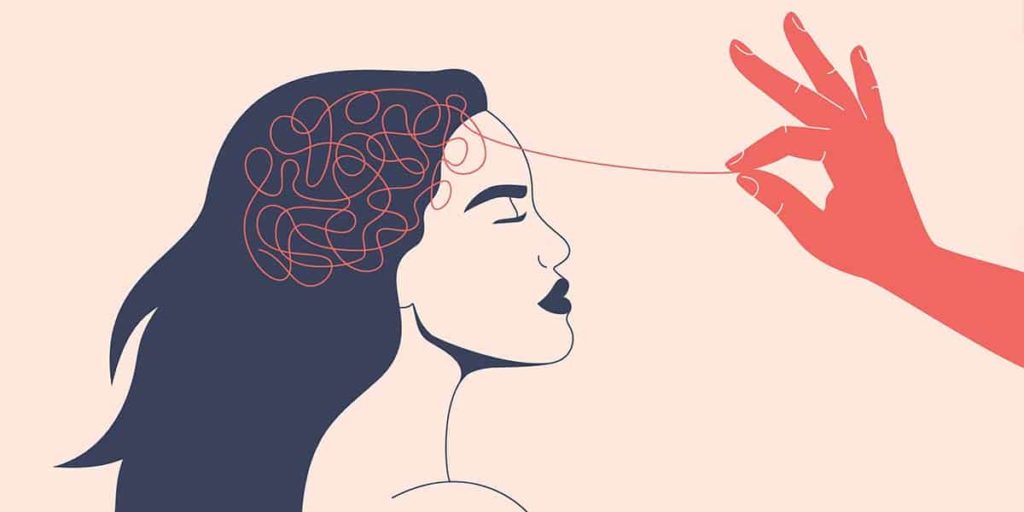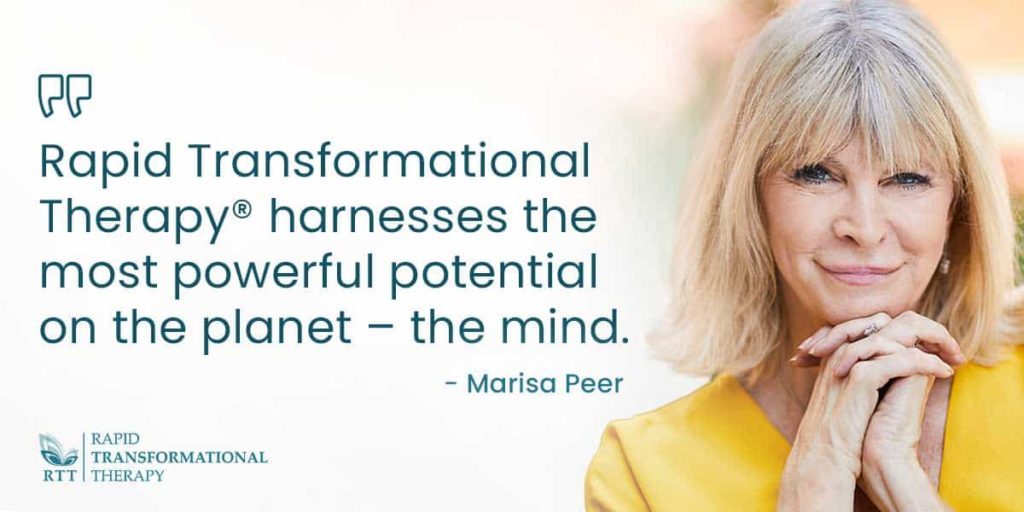Have you ever found it difficult to open up to someone close, like a friend or romantic partner?
Do you prefer casual relationships over committed ones?
Have you ever called your partner “clingy” when they expressed a need for emotional connection?
If any of these sound familiar, you may have what’s called an “avoidant attachment style.”
Having an avoidant attachment style means you’re uncomfortable with intimacy and have problems developing deeper relationships with others.
Over time your avoidant behavior could lead to depression, loneliness, feeling empty, and a general disconnect from family and loved ones.This article will help you understand what avoidant attachment is and how you can develop a healthier attachment style for more fulfilling relationships instead.
You will learn:
- What avoidant attachment is
- How avoidant attachment affects you
- Three steps to developing a more secure attachment style
What Is an Avoidant Attachment Style?
We all have a specific attachment style, which, in short, is how we operate in relationships and what we expect the relationship dynamics to be.
Attachment style is a concept developed in the 1960s by psychoanalyst John Bowlby as a part of his work on attachment theory. It describes how different children attach to their parents.
It was later concluded that these attachment styles stay present with us throughout our lives. They affect how we interact within the context of relationships—especially those romantic in nature.
Who you choose as your partner, how you behave in a relationship, and even how long you stay in one; all these can be attributed to your attachment style.
Avoidant attachment style describes people who are emotionally avoidant, self-reliant, and highly value their independence and freedom (to a fault).
They may avoid getting into committed, romantic relationships simply because closeness and intimacy make them uncomfortable.
Though they may enjoy someone’s company, they tend to shut down when others get too close; they may even sabotage the relationship to maintain their distance.
Signs of Avoidant Attachment

So, what are the characteristics of avoidant attachment style?
If you have an avoidant attachment style, you’ll most likely appear outwardly independent.
While you might see this as a strength, in reality, you may be avoiding closeness and intimacy due to the rejection you experienced in childhood.
Instead of seeking out support from others, avoidants prefer to be self-sufficient, rely on self-soothing techniques, and suppress their emotions.
Consequently, they appear distant and aloof, which prevents them from developing deep, intimate connections with their partners and loved ones.
Because of this behavior, people with an avoidant attachment style may not get the support they need to process negative emotions healthily. They also miss out on developing healthy, meaningful relationships with others.
Take a look at the signs below and see if you can relate to them.
Other signs of avoidant attachment in adults:
- Preferring to be alone and not be too attached or close to anyone
- Being uncomfortable when a relationship becomes too close
- Perceiving your partner as “wanting too much” or being clingy when they want emotional intimacy
- Focusing on yourself most of the time and not paying a lot of attention to the needs and feelings of others
- Difficulty asking for support from your partner and preferring to use indirect strategies such as hinting, complaining, and sulking instead
- Difficulty expressing your emotions and being vulnerable with your partner
- Responding to arguments, conflicts, and stressful situations by becoming distant and aloof
If these sound familiar to you, you may have an avoidant attachment style which could negatively affect your emotional health and personal relationships.
What Causes an Avoidant Attachment Style?
Researchers discovered that children who had emotionally distant caregivers were more likely to develop an avoidant attachment style.
Children who suffered repeated rejection from their parents learned to suppress their desire for comfort when distressed or upset.
They develop a sense of shame and feel like they’re not enough, that they are not worthy of attention and love from their parents.
Consequently, they learn to self-soothe and rely on themselves instead of their caregivers for comfort.
For example, your parent might have been strict and discouraged you from crying or expressing outward emotion. As a result, you may have learned to cry less (or not at all) while keeping your distress to yourself.
They develop a fear of rejection that can continue into adulthood. It is often supported by an unconscious belief that other people are unreliable. A person with an avoidant attachment style thinks that it’s safer to avoid needing others in their life.
You may shy away from intimate relationships because life has taught you that the only person you can depend on is yourself.
How Avoidant Attachment Style Can Affect Your Life

If you have an avoidant attachment style, you may not think there’s anything wrong. After all, what’s so bad about being independent?
The problem is that avoidants aren’t truly independent.
They’re sustaining themselves through unhealthy behaviors such as suppressing their emotions and disconnecting from their issues. They may also not know how to process negative emotions or ask for support when they need it.
These are harmful effects of avoidant attachment in adults:
- Lack of meaningful relationships
Because they fear rejection, people with an avoidant attachment style tend to keep others at a distance. They rationalize that if they don’t open up or be vulnerable, other people can’t hurt them. However, this also means they miss out on developing enriching and meaningful relationships.
- Emotional repression
Avoidants repress their feelings as a way to avoid being vulnerable. However, bottling up their emotions means avoidants aren’t dealing with their issues; they’re simply ignoring them.
The resulting anxiety and stress may trigger destructive coping mechanisms such as overeating, alcoholism, or drug addiction.
In a relationship, avoidants may also shut down in times of conflict, making it impossible for their partners to connect with them and resolve their issues healthily. The relationship ends up becoming a toxic cycle of arguments that lead nowhere, or they end up separating.
- Sabotaging their relationships
Avoidants become fearful when a relationship gets too close and may sabotage their relationships without realizing it. They may find minor faults or issues with their partner or the relationship and blow it out of proportion in order to get out of it.
If you recognize any of these signs, it probably means you have an avoidant attachment style. This could potentially cause you unhappiness and prevent you from having a close connection with your partner.
4 Steps To Break Free From Avoidant Attachment Style

The good news is that even if you have had an avoidant attachment style your whole life, it’s possible to break free and develop a secure attachment style instead.
Research has shown that having a secure attachment style is much healthier for you in the long run. Those with a secure attachment style are happier and more supported. They are less likely to become depressed, are more successful, and have better relationships overall.
Here are a few steps you can take to start developing a more secure attachment style:
Step 1: Develop mindfulness and reflect on previous behavior
The first step to changing your attachment style from avoidant to secure is by developing mindfulness.
It’s essential to recognize avoidant attachment behavior and the limiting beliefs which perpetuate it.
Reexamine your childhood: did your parents or caregivers make you feel rejected when you were little? Do you recall feeling neglected or feeling like you had to take care of yourself because you were alone?
Observe what you do today: do you feel like you can’t trust people fully, and the only person you can rely on is yourself? Do you find yourself nitpicking on your relationship or your partner? Is it challenging to be vulnerable or open up to them? Do you get anxious when other people get closer to you?
Once you’ve recognized your avoidant behavior, dive deeper into the motives behind it. Ask yourself questions such as, “Why do I find it difficult to open up to my partner?”
You may realize that you have certain limiting beliefs that stem from a deep-rooted fear of rejection.
For example, you may believe that other people will always disappoint you. or that being emotional or vulnerable is a weakness, so you shy away when someone gets close.
Marisa Peer, a world-renowned therapist, explains that these limiting beliefs are embedded deep in your subconscious—the part of your mind where the roots of all issues lie. These beliefs guide your behaviors without you even realizing it.
Through practicing mindfulness, you become aware of how all the elements are connected:
Your childhood experiences led to a fear of rejection.
Subsequently, you developed limiting beliefs (everyone else is unreliable) and behaviors (avoidant attachment style) as a defense mechanism to cope with this fear.
With this in mind, you can start working on addressing each of these issues.
Step 2: Challenge your limiting beliefs

Now that you have a deeper understanding of why you have an avoidant attachment style, it’ll be easier for you to develop a secure attachment style instead.
First, it’s essential to challenge limiting beliefs that perpetuate your avoidant behavior.
For example, if you believe that everyone will hurt you, think back on times when your loved ones have been there for you and supported you instead.
Understand that while some people may still hurt you in the future, that isn’t the default setting. Many will be supportive of you and be there for you if you let them.
Further, if you believe that being emotional and vulnerable is a weakness, think about the courage it takes to be authentic and express your feelings.
In reality, being authentic and connected with your emotions is a strength—in fact, it’s considered a critical aspect of being a good leader.
More importantly, don’t just challenge these limiting beliefs in your mind; you also need to actively act against them.
For example, if you’re avoidant, research shows that simply not avoiding relationships could help you move away from your avoidant tendencies.
If you’re afraid of opening up, learning to be vulnerable with your partner and loved ones could help you with self-expression and developing deeper relationships.
Start by being honest about your feelings with someone close to you. Communicate to your partner or loved ones about any insecurities or anxiety that you may have. Don’t be afraid to ask for support openly.
It’s scary at first, but the idea is to normalize being in touch with your feelings and asking for help when you need it.
You may not change your behavior and avoidant tendencies overnight, but you will gradually move towards a more secure attachment style by taking small steps.
Try hypnosis to challenge your beliefs
If you’d like some help challenging your limiting beliefs, consider self-hypnosis programs. These programs provide positive suggestions for your mind, which helps accelerate the process of breaking limiting beliefs.
Marisa Peer’s specialized Dating and Relationships bundle is a self-hypnosis audio bundle that can help you release your limiting beliefs about not being lovable and deserving of a fulfilling relationship. It will also empower your beliefs so that you’re able to be more vulnerable and open with your partner.
The bundle consists of three modules—#1: Attract Your Perfect Relationship, #2: Boost Your Confidence & Self-Esteem, and #3: Lovability.
These modules will help you address any internalized fears and anxieties you may have in your subconscious and enhance the quality of your relationships.
However, if you’d like to address the root cause of your avoidant behavior directly, consider seeing a professional therapist.
Step 3: Work with a professional therapist

Since avoidant attachment behavior stems from your childhood, you may have internalized fear of rejection in your subconscious.
With discipline and consistency, you can reprogram your mind to get rid of this fear on your own; however, it may take a long time before you see results since the root cause of this issue lies in your subconscious.
If you feel that your avoidant attachment style has negatively impacted your relationships and life, a professional therapist can help you.
A professional therapist will use powerful therapy methods such as Rapid Transformational Therapy® (RTT®) to help identify and address your childhood trauma.
The therapist works directly with your subconscious to first remove your internalized fears before reprogramming your mind to develop a more secure attachment style.
You’ll find that you are more in tune with your feelings and can express your emotions with greater clarity. This allows you to be more vulnerable with your loved ones and develop deeper, more meaningful relationships.
Marisa Peer, voted UK’s #1 best therapist, is the founder of the Rapid Transformational Therapy® (RTT®) method, which she developed over her thirty-year career as a therapist. She has successfully transformed the lives and careers of her clients all over the world, including celebrities, royalty, top athletes, and CEOs.
RTT® is a form of therapy that combines the best principles of hypnosis, cognitive behavioral therapy (CBT), neuro-linguistic programming (NLP), neuroscience, and hypnotherapy to create a one-of-a-kind therapy approach that is remarkably effective.
You may transform your avoidant attachment style to a secure attachment style in just one to three sessions after seeing an RTT® therapist.
Book a call with one of the RTT® specialist therapists trained by Marisa Peer today. These therapists have a proven record of helping people deal with their avoidant attachment issues.
Step 4: Join Marisa Peer’s Unstoppable Confidence Challenge
Learning how to gain the confidence you need to overcome the challenges that come with avoidant attachment, unfortunately won’t happen overnight. It takes dedication and perseverance, which can be difficult if you’re you’re doing it on your own.
That’s where the 21-Day Unstoppable Confidence Challenge comes in. Join a community of like-minded individuals, for a challenge created by Marisa Peer, that aims to teach you how to build unshakeable confidence in yourself, so you can shrug off the limiting beliefs that are holding you back in life, and become the version of you that you deserve to be.
To find out more about the confidence challenge, click the banner below and sign-up today!

Stop Fearing Love
Though you may have a deep fear of love and rejection, the good news is that you can change.
An RTT® therapist will help you remove these mental blocks from your subconscious and develop a more secure attachment style.
Release your fears of love and start enjoying healthier, more fulfilling relationships today.


